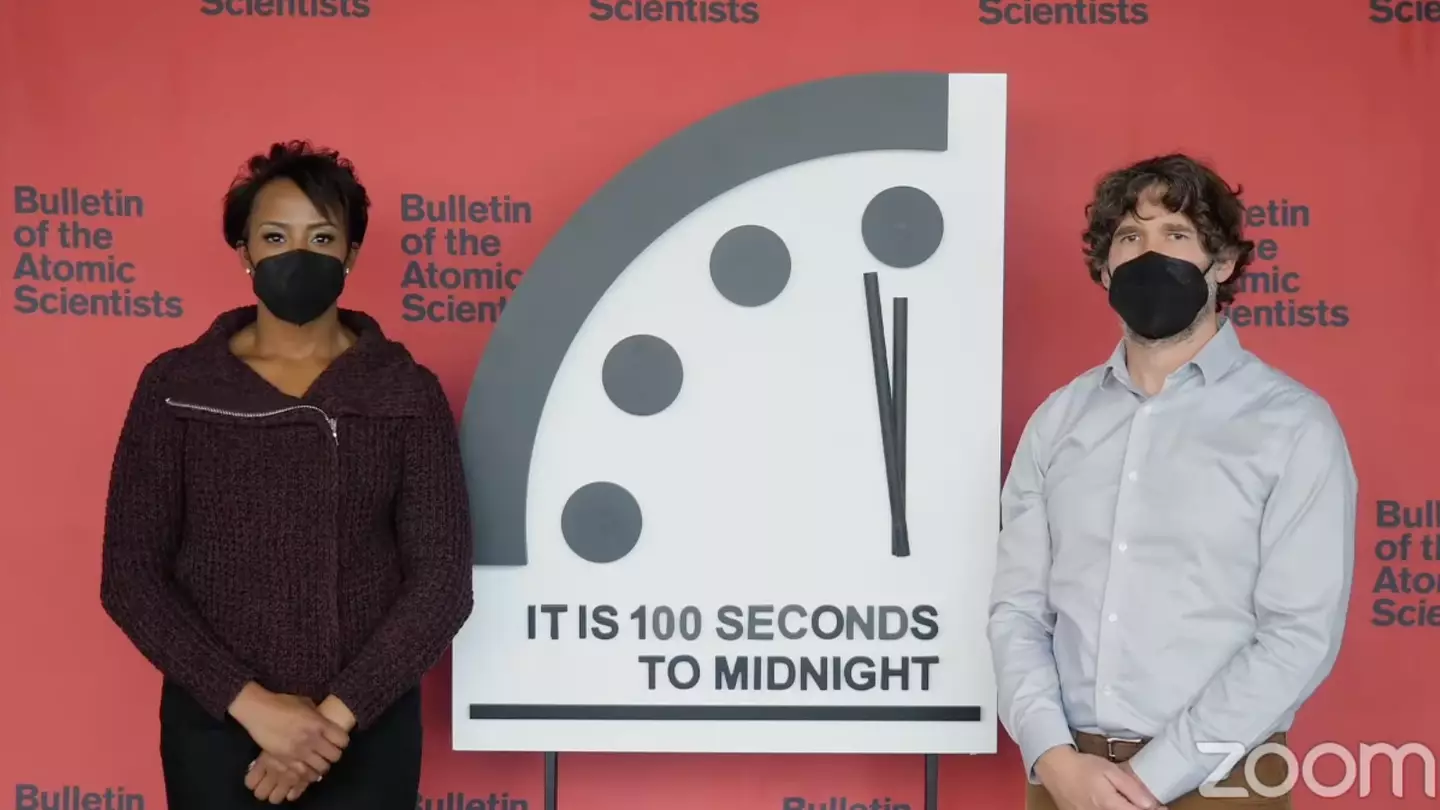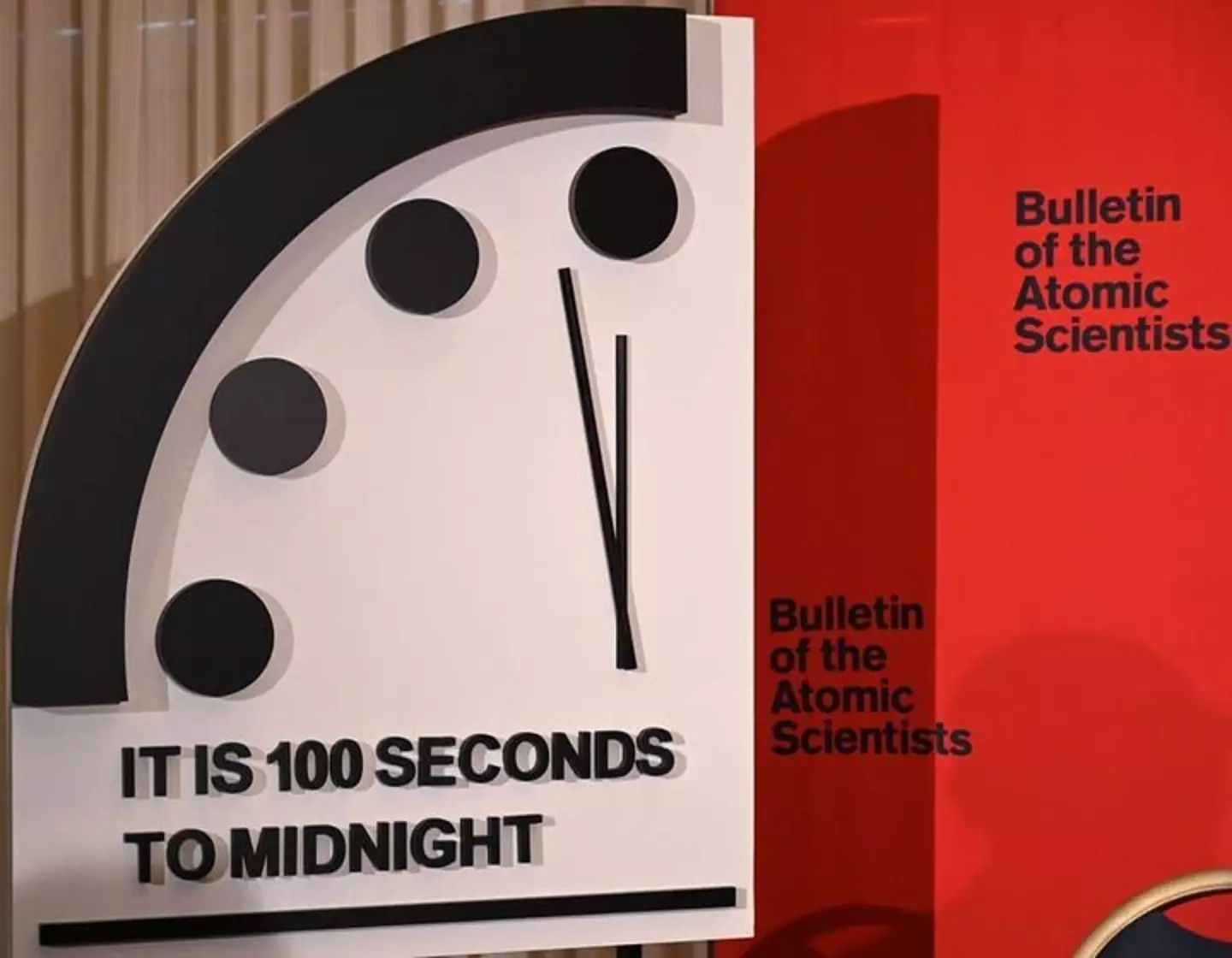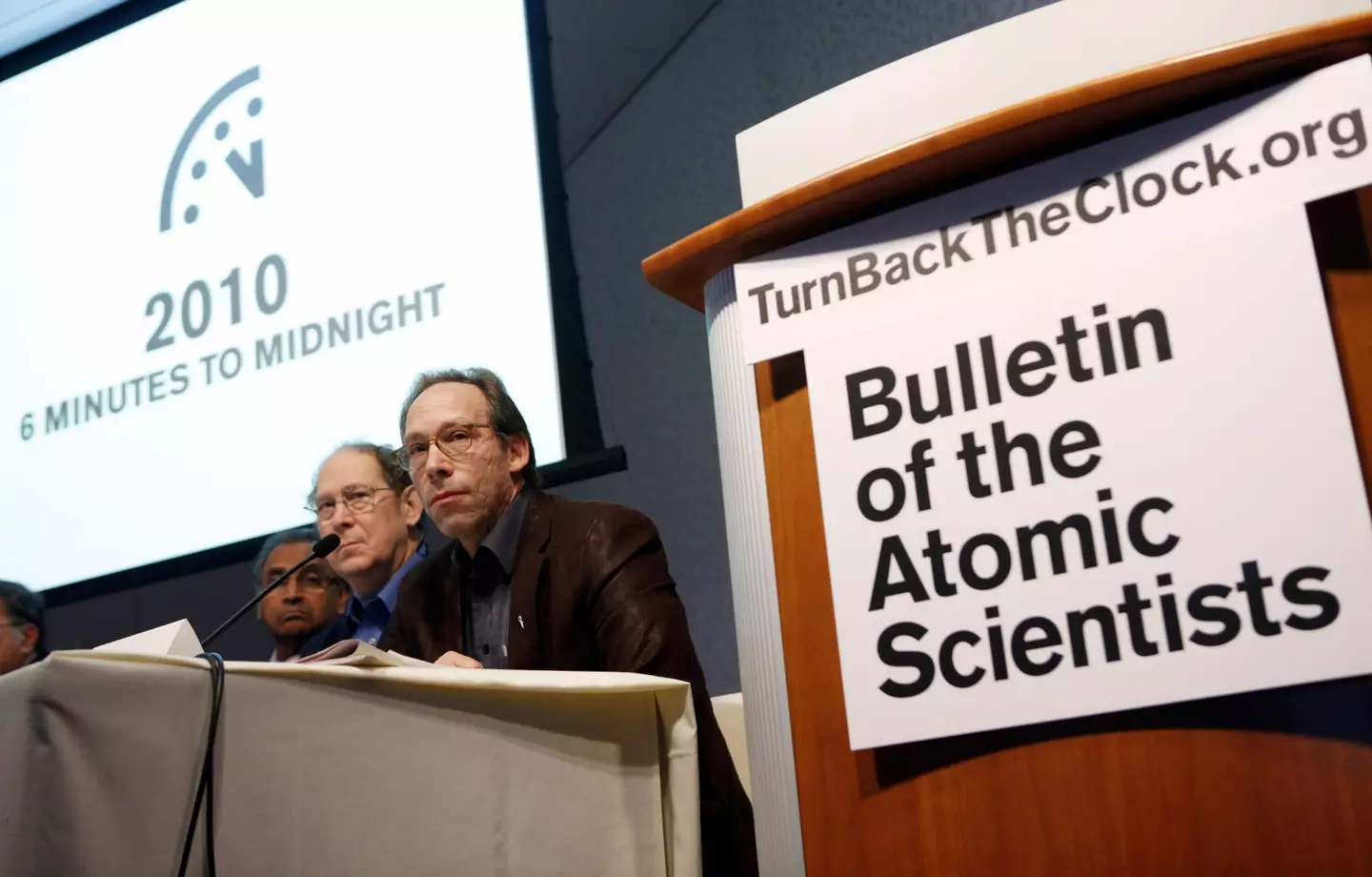
The Doomsday Clock remains unchanged for 2022, with the hands staying at 100 seconds to midnight - the same time as 2021 and 2020, which is closest to midnight it's ever been.
Rachel Bronson, President and CEO of the Bulletin of the Atomic Sciences - the academic journal behind the clock - said: “Today, the members of the Science and Security Board find the world to be no safer than it was last year at this time and therefore has decided to set the Doomsday Clock once again at 100 seconds to midnight.”
Sharon Squassoni, Science and Security Board co-chair at the Bulletin of the Atomic Scientists, said the world is 'stuck in a perilous moment, one that brings neither stability nor security'.
She said: "In 2021, there were some positive developments in each of the areas of concern that the Science and Security Board reviews. However, these have not managed to outweigh the longer term negative trends that continue to erode security."
Squassoni said the extension of the new START Treat 'keeps a cap on numbers of US and Russian strategic nuclear weapons', but said this is 'a small down payment on strategic stability so desperately needed between the US and Russia', adding that tensions regarding Ukraine also 'loom ominously'.
She continued: "In climate change, rhetorical progress is not yet matched with swift actions, and in the sphere of biosecurity, trends point towards less, rather than more cooperation to identify and manage or mitigate threats.

"A particularly invidious threat is the intentional undermining of the public’s ability to sort out what’s true from what’s patently false by information warfare. This subverts our ability to arrive at consensus on the solutions needed to achieve positive change."
Squassoni added: "The Science and Security Board is largely optimistic about humankind’s ability to use technology to mitigate existential threats – provided there is a will to work towards common objectives."
The clock, which was founded in 1947, is a metaphor to represent how close mankind is to global catastrophe. Each year, it is either moved closer to midnight, further away, or remains at the same spot; the nearer the hand creeps to midnight, the nearer we supposedly are to the apocalypse, or 'Doomsday', serving as a stark reminder to how close we are to destroying our planet.
It was first set at seven minutes to midnight as a warning to humanity about the danger posed by nuclear weapons, with the clock's hands set farthest from midnight - at 17 minutes to - back in 1991 after the end of the Cold War.
Last year, the clock remained unchanged at 100 seconds to midnight, with the Bulletin's President and CEO Dr Rachel Bronson referencing the coronavirus pandemic as a factor for the not moving the time further back.

"Humanity continues to suffer as the Covid-19 spreads around the world,” Bronson said at the time, adding: "The pandemic serves as a historic wake-up call, a vivid illustration that national governments and international organizations are unprepared to manage complex and dangerous challenges, like those of nuclear weapons and climate change."
However, experts at the Bulletin believe there is hope after changes in recent years - not least thanks to steps already taken by US President Joe Biden, who replaced Donald Trump in in January 2021.
Lorene Yue, spokesperson for the Bulletin of the Atomic Scientists, told LADbible last year that the Bulletin sees 'bright spots and opportunities', and that the clock as been set back seven times since 1947, meaning we 'absolutely' can move it further away in the future.

As for the impact of Covid-19, Yue said the pandemic is 'not an existential threat that will obliterate civilisation', but that it 'does serve as a historic wake-up call of how unprepared countries are in properly handling global emergencies'.
Yue added: "The Covid-19 pandemic also brought a harsh spotlight on how a disregard for science, through the spread of false and misleading information, undermines the ability of responsible national and global leaders to protect the security of their citizens."
Ultimately, what people need to remember is that the Doomsday Clock was set up to serve as as warning, rather than a set prophecy, meaning there are ways to alter the time by making drastic changes in the areas it represents.
Yue said: "The Bulletin's Doomsday Clock is a metaphor to warn the public about how close we are to destroying our own world with dangerous technologies of our own design.
"If nuclear weapons exist and can be used, the risk that we could destroy civilization also exists.
"And if Earth's climate continues to change, we are at risk of suffering the potential consequences."
Featured Image Credit: Bulletin of the Atomic SciencesTopics: World News